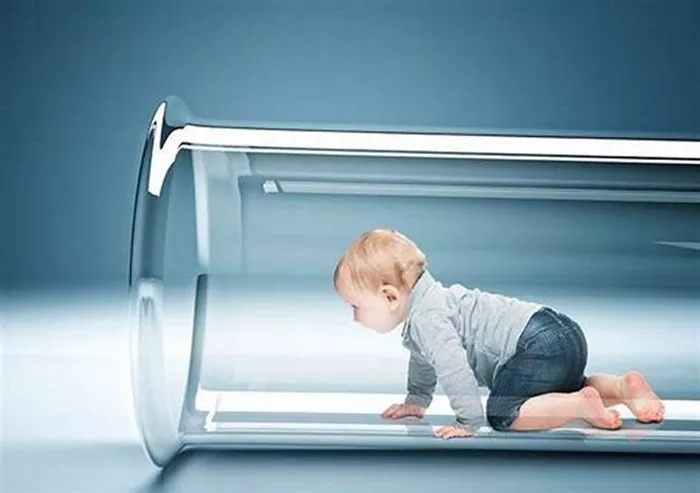The term “test tube baby” refers to a baby conceived through in vitro fertilization (IVF). This medical breakthrough revolutionized reproductive medicine, giving hope to countless couples struggling with infertility. The story of the first test tube baby is a tale of scientific perseverance, ethical debates, and a leap forward in medical technology.
The Birth of Louise Brown
Louise Joy Brown is the name of the world’s first test tube baby. Born on July 25, 1978, in Oldham, England, her arrival marked a significant milestone in the history of medicine. Louise’s birth was the culmination of years of research and experimentation by scientists Dr. Robert Edwards and Dr. Patrick Steptoe.
The Pioneers Behind the Breakthrough
Dr. Robert Edwards, a physiologist, and Dr. Patrick Steptoe, a gynecologist, collaborated to develop the IVF procedure. They faced numerous challenges, including ethical concerns and technical difficulties. Their work began in the 1960s and continued for over a decade before they achieved success.
The IVF Procedure Explained
IVF involves several steps. First, a woman’s ovaries are stimulated to produce multiple eggs. These eggs are then retrieved and fertilized with sperm in a laboratory. The resulting embryos are cultured for a few days before being implanted into the woman’s uterus. The process requires careful monitoring and precise timing.
Louise’s Parents: Lesley and John Brown
Lesley and John Brown, Louise’s parents, had been trying to conceive for nine years without success. They faced the heartbreak of infertility, but their determination led them to Dr. Edwards and Dr. Steptoe. The Browns were willing to try the experimental procedure, despite the uncertainties and potential risks.
The Ethical Debates Surrounding IVF
The development of IVF was met with ethical and moral debates. Critics argued that creating life in a laboratory setting was unnatural and could lead to unforeseen consequences. Religious groups and some members of the medical community voiced their concerns. However, the potential to help infertile couples outweighed the criticisms for many.
See also: When Is It Too Late to Change Baby’s Name?
Louise’s Birth: A Media Sensation
Louise’s birth was a global media sensation. News outlets from around the world covered the event, highlighting the scientific achievement and the ethical debates. Louise became a symbol of hope for infertile couples, and her story inspired further research in reproductive medicine.
The Impact on Reproductive Medicine
The success of IVF and the birth of Louise Brown had a profound impact on reproductive medicine. It opened the door to new treatments and technologies for infertility. Since Louise’s birth, millions of babies have been born through IVF, bringing joy to families worldwide.
Advancements in IVF Technology
Since 1978, IVF technology has advanced significantly. Improved techniques, such as intracytoplasmic sperm injection (ICSI) and preimplantation genetic diagnosis (PGD), have increased success rates and expanded the possibilities for treating infertility. These advancements have made IVF more accessible and effective.
Personal Reflections of Louise Brown
Louise Brown has often shared her experiences growing up as the first test tube baby. She has expressed gratitude for the opportunities provided by IVF and the pioneering work of Dr. Edwards and Dr. Steptoe. Louise’s story continues to inspire those facing infertility and seeking reproductive assistance.
The Legacy of Dr. Edwards and Dr. Steptoe
Dr. Robert Edwards was awarded the Nobel Prize in Physiology or Medicine in 2010 for his contributions to the development of IVF. Although Dr. Steptoe passed away before the Nobel Prize was awarded, his work and dedication are also recognized and celebrated. Their legacy lives on through the countless lives they have helped create.
Challenges and Future Directions in IVF
While IVF has brought hope to many, it also presents challenges. The procedure can be expensive, and success rates vary. Additionally, ethical debates continue, particularly regarding the use of embryos and genetic modification. Future research aims to improve accessibility, success rates, and ethical considerations in reproductive medicine.
The Human Aspect of IVF
Beyond the scientific and technical aspects, IVF is a deeply personal and emotional journey for many couples. The desire to have a child and the struggles of infertility can be overwhelming. Support from medical professionals, counselors, and support groups plays a crucial role in helping individuals navigate this journey.
Global Perspectives on IVF
IVF is practiced worldwide, with varying regulations and cultural perspectives. Some countries have strict laws governing the use of IVF, while others offer more lenient guidelines. Understanding these global perspectives helps in appreciating the diverse challenges and successes in the field of reproductive medicine.
Key Milestones in IVF History
1960s: Dr. Robert Edwards begins research on human fertilization.
1969: First successful fertilization of a human egg outside the body.
1970s: Dr. Edwards and Dr. Steptoe develop techniques for egg retrieval and embryo implantation.
1978: Birth of Louise Joy Brown, the world’s first test tube baby.
1980s: Expansion of IVF clinics worldwide and improvements in techniques.
1990s: Introduction of ICSI and PGD, increasing success rates and options for genetic screening.
2000s: Continued advancements in IVF technology and increased accessibility.
2010: Dr. Robert Edwards awarded the Nobel Prize in Physiology or Medicine.
Present: Ongoing research and development in reproductive medicine, focusing on improving success rates, accessibility, and ethical considerations.
Conclusion
The birth of Louise Brown, the first test tube baby, represents a triumph of human ingenuity and determination. Her story is one of hope, scientific achievement, and the relentless pursuit of solutions to human challenges. The legacy of IVF continues to evolve, offering new possibilities and fulfilling dreams for families around the world.
The story of the first test tube baby, Louise Brown, is more than a historical event; it is a testament to the power of science and human resilience. It underscores the importance of innovation in medicine and the profound impact it can have on individuals and families. As IVF technology continues to evolve, it brings with it the promise of new life and new beginnings for many around the world.


